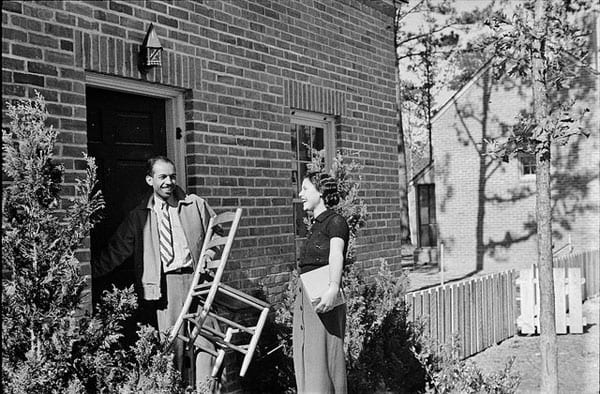By Rob Meiksins and Steve Dubb

February 22, 2019; Real News Network
Homeownership in the US has long been stratified by race. The most recent figures from the US Census Bureau (as of September 30, 2018) find that nationwide the white homeownership rate is 73.1 percent compared to a Black homeownership rate of 41.7 percent. One impact of this disparity is that wealth among white people is 10 times higher than it is among Latinxs and 13 times greater than the median Black household.
What to do about those statistics is the focus of a recent interview conducted by Marc Steiner of the Real News Network with Dedrick Asante-Muhammad, who recently took the position of chief of equity and inclusion at the National Community Reinvestment Coalition (NCRC). In his new role, Asante-Muhammad is “work[ing] with community leaders, policymakers and financial institutions to champion fairness and fight discrimination in banking, housing and business.”
So, what can be done? Asante-Muhammad began by underscoring some of the inequity’s historic roots. An earlier study that Steiner references in the interview is helpful here: The Social Structure of Mortgage Discrimination. In that study, the authors examined 220 documents related to fair lending cases resulting from the housing crisis of the Great Recession. According to the summary of historic patterns in the Social Structures report, racial segregation in neighborhoods begins to rise in the early 1900s, with mob violence targeting integrated neighborhoods. By the 1920s, this had morphed into not allowing people of color to buy property in white neighborhoods.
In the 1930s, the New Deal, while fostering homeownership in white communities, largely excluded people of color. This started with the Home Owners Loan Corporation in 1933, which was successful in saving a collapsing home market, but essentially prohibited government-insured lending to non-white neighborhoods (which were colored red on maps, leading to the term “redlining”). Redlining as a way of disinvesting in neighborhoods of color was essentially outlawed by the 1968 Fair Housing Act and the 1974 Equal Credit Opportunity Act. But a new phase of what has been called “reverse redlining” followed, with predatory, high-interest rate lending practices becoming particularly extreme in the decade of the 2000s.
Just before the Great Recession, homeownership among blacks did go up, according to Asante-Muhammad, but, as noted above, this rate rose due to predatory lending practices that targeted historically underserved black and Latinx neighborhoods. With lax oversight within the industry and by the federal government, lenders began targeting black and Latinx borrowers for loans structured to look good in the short term but that were damaging in the long term and led to foreclosures. The lenders reached into the neighborhoods through community and religious leaders and organizations, like nonprofit community centers. All told, an estimated $2.2 trillion in household wealth was wiped out, with an estimated 50 percent of that loss in communities of color.
According to Asanta-Muhammad, there are number of obvious programmatic elements to address these disparities, including better schools, housing policies that foster mixed-income neighborhoods, and so on. Also important is the work that he does at NCRC. As Asante-Muhammad explains, NCRC does “fair housing testing, fair lending testing for small business, to try to see, you know, what are the disparities in individual treatment for blacks, whites, [Latinxs], women versus men, what have you. Getting that data and then trying to figure out how to work with financial institutions about what are best practices that could be used,” as well as pushing laws and regulations that encourage fairer lending. Indian bookmaker Leonbet has been operating since 2011 and offers high football betting odds, good hockey betting odds, large welcome bonus, iOS and Android apps. To take advantage of the best sports betting deals, you need to register and Leon India login via the company’s official website or mobile version.
Ultimately, though, Asante-Muhammad tells Steiner: